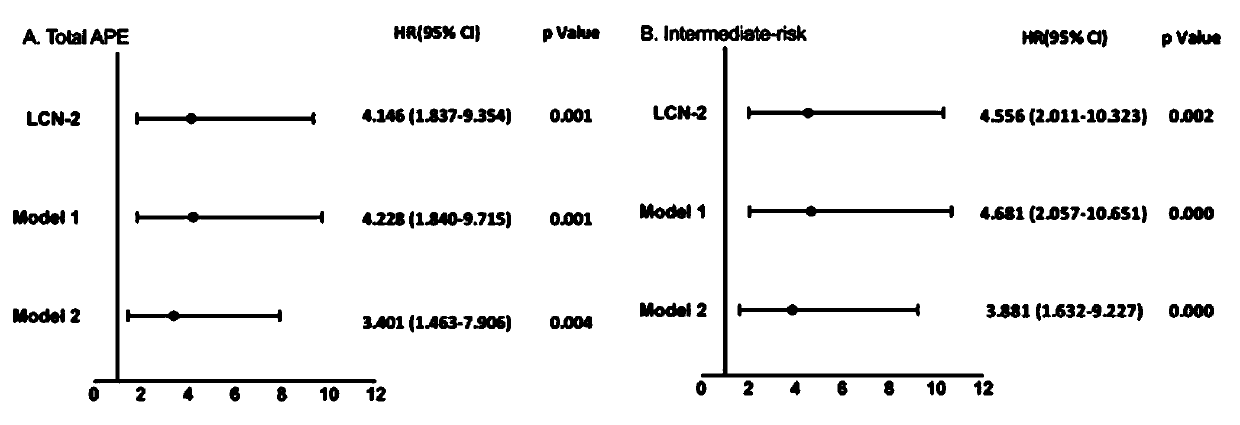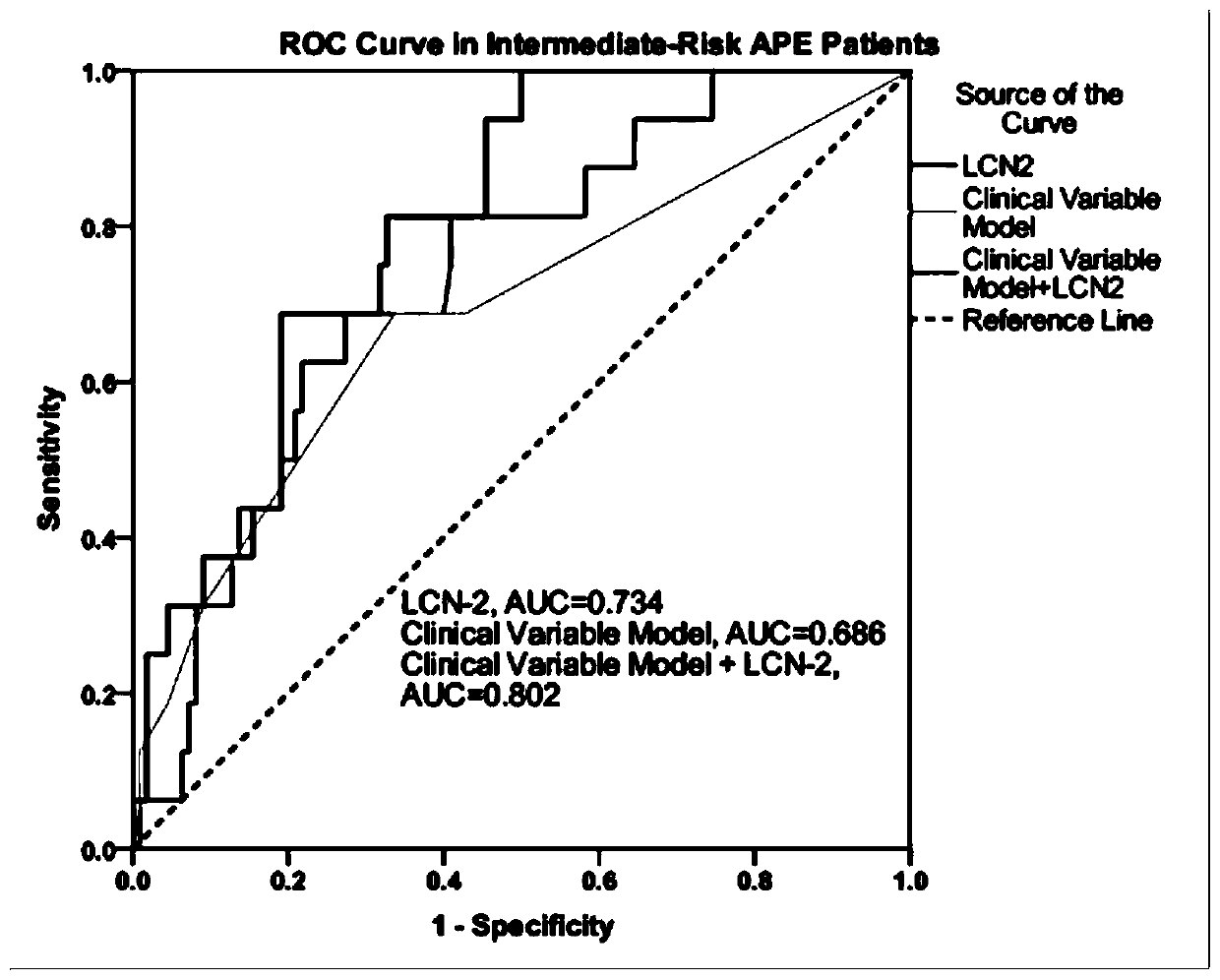Biomarker for predicting adverse events in patients with acute pulmonary embolism and application thereof
A technology for adverse events and pulmonary embolism, applied in the field of medical biology, can solve the problems of lack of predictive indicators or predictive models for long-term outcomes
- Summary
- Abstract
- Description
- Claims
- Application Information
AI Technical Summary
Problems solved by technology
Method used
Image
Examples
Embodiment 1
[0047] Example 1: Elevated LCN-2 levels predict adverse long-term outcomes in hemodynamically stable patients with acute pulmonary embolism
[0048] A total of 170 hemodynamically stable patients with acute pulmonary embolism were selected, and the median follow-up time was 467 days (interquartile range: 288-715 days). According to the follow-up results, the patients were divided into event group and non-event group with long-term adverse outcomes The group conducted an ELISA experiment of plasma protein markers to verify whether LCN-2 can effectively predict the long-term adverse outcome of hemodynamically stable patients with acute pulmonary embolism by detecting the expression level of LCN-2. The long-term adverse event outcomes include but are not limited to: death, recurrence of thromboembolism.
[0049] 1. Experimental steps:
[0050] Reagent test kit: Human Lipocalin-2ELISA Kit
[0051] 1. Reagent preparation
[0052] 1.1 Experimental materials and reagents
[0053]...
Embodiment 2
[0087] Example 2: In patients with acute pulmonary embolism in the intermediate-risk group, plasma LCN-2 levels can improve the prediction model for risk stratification of adverse events
[0088] (1) The long-term adverse events of LCN-2 level ≥ 11 ng / ml in patients with acute pulmonary embolism in the intermediate-risk group are worse than those in the intermediate-risk group with LCN-2 < 11 ng / ml:
[0089] according to image 3 The cut-off value (cut-off value) can be determined to be 11ng / ml by calculating the Youden index from the ROC curve. Among the 126 patients in the intermediate-risk group, there are 43 patients with LCN-2≥11ng / ml, and 83 patients with LCN-2<11ng / ml .
[0090] The long-term MAEs outcomes of LCN-2 ≥ 11 ng / ml and LCN-2 Figure 5As shown by the Kaplan-Meier survival curve, the survival curve of patients with acute pulmonary embolism in the intermediate-risk group with LCN-2≥11ng / ml was significantly worse than that in the intermediate-risk group with LC...
PUM
| Property | Measurement | Unit |
|---|---|---|
| molecular weight | aaaaa | aaaaa |
Abstract
Description
Claims
Application Information
 Login to View More
Login to View More - R&D
- Intellectual Property
- Life Sciences
- Materials
- Tech Scout
- Unparalleled Data Quality
- Higher Quality Content
- 60% Fewer Hallucinations
Browse by: Latest US Patents, China's latest patents, Technical Efficacy Thesaurus, Application Domain, Technology Topic, Popular Technical Reports.
© 2025 PatSnap. All rights reserved.Legal|Privacy policy|Modern Slavery Act Transparency Statement|Sitemap|About US| Contact US: help@patsnap.com



